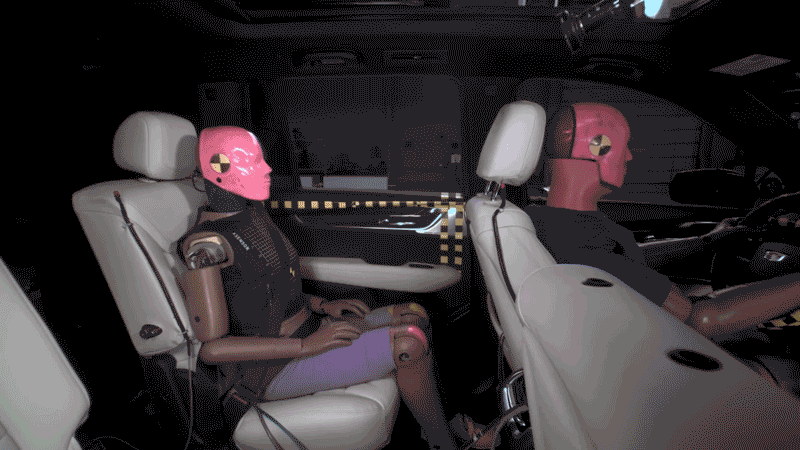Luxury Midsize SUVs Aren't As Safe As You Think: Report

The Insurance Institute for Highway Safety or IIHS has been holding automakers accountable for public safety since the ’90s, by putting new cars through more stringent and realistic crash tests than required by the National Highway Traffic Safety Administration or NHTSA. Thanks in part to the work of the IIHS, new cars are safer than ever, but the IIHS’ focus has recently shifted to the back seat where occupant safety has stagnated.
The latest group of cars to be crashed by the IIHS in its newest moderate front overlap test is midsize luxury SUVs, the chariot of choice for many families in the U.S., and a class often seen by consumers as very safe vehicles. The IIHS’ new moderate overlap test includes a focus on the safety provided to rear-seat passengers, where many of these models faltered. The IIHS reports:
Read more
Wolverine PS5 Gameplay Leaks After Unprecedented Insomniac Games Hack
Why is Wonka considered a box office success compared to The Marvels?
It's Been 2 Months. Why Can't NASA Open the Asteroid Sample Container?
Kristen Stewart gets buff vengeance in this trailer for Love Lies Bleeding
Families tend to shop for SUVs as they’re perceived to be safer than other vehicles, and while physics still dictate that heavier vehicles fare better in crashes with lighter vehicles, these family haulers are not all created equal.
The biggest area that many of these SUVs struggled was in safely cradling a smaller-framed individual in the back seat. All of the vehicles that did not score a Good rating– Acura MDX, BMW X3, Audi Q5, Lexus RX, and Cadillac XT6– exhibited dangerous submarining of the back-seat occupant.
Submarining occurs when a vehicles lap belt slides up onto the abdomen during a crash, and the occupant slides down slightly, causing the lap belt to exert excessive forces on our soft and tender bellies and organs rather than safely securing our sturdy pelvises. Submarining leads to a higher risk of abdominal injuries, and separately and subjectively looks really really miserable.
These rear-seat ratings are nullified if a child is properly restrained in a child seat, but for the thousands of children who ride in the back seat without a booster, these ratings should be taken into consideration when shopping for a new family car.
The Cadillac XT6 was the worst performer of this group, with rear passengers facing extremely high forces to the chest, head and neck, and exhibited poor control of the passenger’s restraint system. It should be said that all of the vehicles in this test provide exceptional protection for front seat occupants, only the rear-seat occupants were at-risk, which in this vehicle category might just be a dealbreaker.
Research shows that in newer vehicles, the risk of a fatal injury is now higher for belted occupants in the second row than for those in front, so to anyone planning to regularly carry folks in the back seat, check out the IIHS website here to research the safest vehicle for your needs.
More from Jalopnik
Massive Hack Reveals New Venom And X-Men Games Coming By 2030
X-Men Games Will Be Sony Exclusives For More Than A Decade, Leak Reveals
Sign up for Jalopnik's Newsletter. For the latest news, Facebook, Twitter and Instagram.

 Yahoo Autos
Yahoo Autos 